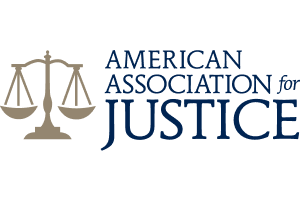Ironworker Injuries

Falls are the number one cause of injury and/or death to ironworkers during steel erection and decking activities on construction sites. In an effort to protect workers, the Department of Labor and Industries has adopted a regulation requiring every employer to adopt a site specific fall protection plan if workers are expected to work ten (10) feet or more above the ground. That regulation requires each employer to do the following:
(a) Identify all fall hazards in the work area.
(b) Describe the method of fall arrest or fall restraint to be provided.
(c) Describe the correct procedures for the assembly, maintenance, inspection, and disassembly of the fall protection system to be used.
(d) Describe the correct procedures for the handling, storage, and securing of tools and materials.
(e) Describe the method of providing overhead protection for workers who may be in, or pass through the area below the work site.
(f) Describe the method for prompt, safe removal of injured workers.
(g) Be available on the job site for inspection by the department.
(3) Prior to permitting employees into areas where fall hazards exist the employer shall:
(a) Ensure that employees are trained and instructed in the items described in subsection (2)(a) through (f) of this section.
(b) Inspect fall protection devices and systems to ensure compliance with WAC 296-155-24510.
(4) Training of employees:
(a) The employer shall ensure that employees are trained as required by this section. Training shall be documented and shall be available on the job site.
WAC 296-155-24505.
Unfortunately, not every employer complies with this rule, since taking the time to tie off appropriately and stay tied off – while making a safer workplace – tends to slow workers down. Consequently, the law places upon every general contractor the non-delegable specific duty to ensure that all subcontractors and workers on a construction site comply with all WISHA construction safety regulations. Stute v. P.B.M.C. Inc., 114 Wn.2d 454, 464, 788 P.2d 545 (1990). WAC 296-155-110 requires general contractors to hold weekly walk around safety inspections, to look for potential hazards, to remedy those hazards, to document and post the findings, and to share those findings with workers. When a general contractor allows a subcontractor to ignore safety regulations and put an ironworker in harm’s way, the general contractor is negligent and can be held liable for the ironworker’s injuries.
Other less common job site injuries suffered by ironworkers include crushing and electrocution from contact with an overhead crane and/or its load. In most cases, these injuries are due to the negligence of the crane operator and his/her employer. Contact with an ironworker only happens because the crane operator does not have a full and clear view of the crane boom and the load. When the crane operator does not have a full and clear view, the Department of Labor and Industries’ Safety Standards for Construction Work requires the crane operator to operate the crane with the assistance of a qualified and dedicated signal person/spotter, who is typically positioned so that he or she can see the crane boom and the load, and be seen by the crane operator, who only moves the crane when signaled to do so. WAC 296-155-53302 and 296-155-53406. Having a spotter is absolutely necessary if workers are working within the swing radius of the crane boom and its load. WAC 296-155-53400.
These minimum safety standards apply to job sites all over the state – in Seattle, Tacoma, Olympia, Bellingham, Marysville, Everett, Centralia, Longview, Vancouver, Ellensburg, Wenatchee, Yakima, Richland, Walla Walla, Spokane, and every other location within the state’s borders that is not located at a federal facility on federal land. The lawyers at Kraft Davies Olsson PLLC have successfully litigated many cases involving ironworkers who have been injured and/or killed while working at construction sites. If you or a loved one has suffered an injury while working on a construction site, please call us at 206.624.8844 for a free consultation.







